Vomiting foam, water or undigested food during pregnancy is not dangerous. But if blood, mucus or bile appeared in the vomit, the cat should be shown to a specialist.
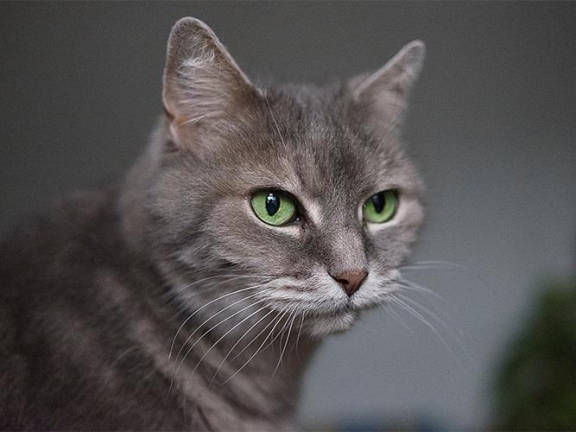
- Vomiting in a cat
- Common causes of vomiting in cats
- How vomiting occurs
- Signs of vomiting in cats
- Diagnosis of white foam nausea
- First aid at home
- Causes of vomiting in cats
- Symptoms of vomiting in cats
- Varieties of vomiting
- First aid for a cat
- Treatment
- Diagnostic measures
- Methods of treatment
- When you need to seek immediate medical attention
- Prevention
Vomiting in a cat
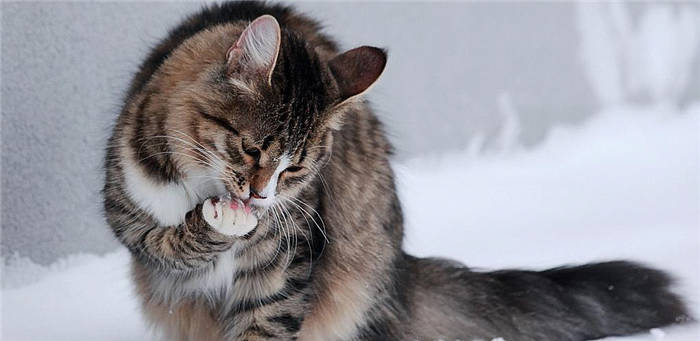
Vomiting is a defensive reaction of the body. It can be acute and chronic, single and prolonged, debilitating, of different color and consistency, accompanied by various accompanying symptoms. Vomiting reflex in cats can occur for many reasons, and finding out the exact triggering factor is the key to successful treatment. Incorrect therapy in some cases is dangerous: in the presence of an unexplained disease, the condition of the pet will only worsen. In addition, prolonged vomiting in a cat can lead to dehydration and death of the animal.
Common causes of vomiting in cats
Why does a cat experience vomiting? The most common causes are the following:
- eating large amounts of food, eating quickly, swallowing large chunks of food;
- ingestion of food after a long period of fasting, in case of infrequent feeding (food in the bowl of cats, unlike dogs, should be present constantly, as the animal eats often, but little by little);
- presence of hair in the gastrointestinal tract, which gets there during licking, accumulates and then is excreted through the oral cavity;
- poisoning by household chemicals, poor quality food, plants, and so on;
- trauma, such as falling and bruising the head, spine, damage to internal organs;
- gastrointestinal cleansing, e.g. with fresh grass that cats specifically eat for this purpose;
- A cat's reaction to powerful medications used to treat an illness;
- Feeding newborn kittens – a nursing cat regurgitates partially digested food and "feeds" the cubs so that their gastrointestinal tract gradually adapts to future food.
Vomiting in a cat may indicate the presence of a disease that requires diagnosis and prescription of specific treatment. This may be: feline distemper, enteritis, kalitsivirosis, helminthiasis, thyroid disease, vestibular pathology and others.
How vomiting occurs
Vomiting is a complex reflex act, which is controlled by the vomiting center, located in the medulla oblongata. Excitation of the vomiting center can occur in the following cases:
- The arrival of impulses from receptors located in the gastrointestinal tract and biliary tract, pharynx, peritoneum, coronary arteries, and vestibular apparatus;
- disorders arising from diseases of the brain;
- the arrival of impulses from the chemoreceptor trigger zone of the brainstem, which is activated by changes in blood composition caused by uremia, hypoxia, diabetic ketoacidosis, infections, and the administration of drugs.
Signs of vomiting in cats
Vomiting can be observed quite often in domestic cats. Its approach is indicated by restless behavior, rapid breathing, empty swallowing movements, profuse saliva secretion.
It is important to remember that impaired swallowing and salivation are signs that may indicate a cat has been infected with rabies. You can learn more about this dangerous disease in the article Rabies in cats: symptoms, ways of infection, prevention.
During the urge to vomit in a cat, strong contractions of the respiratory muscles and diaphragm on inhalation and the abdominal muscles on exhalation are observed.
During the act of vomiting, the muscles of the abdominal wall and diaphragm work vigorously, and the contents of the stomach are forced out through the mouth. Vomiting usually involves holding the breath, which prevents the vomit from entering the airway.
Diagnosis of white foam nausea
White foam vomiting is a mixture of saliva and gastric juice. This is the kind of vomiting that occurs in cats on an empty stomach. To protect the walls from self-digestion, the stomach produces a special liquid that contains protein. It is this fluid that comes out in the form of white foam in cats when they vomit.
Sometimes in the vomiting foam can be found an admixture of yellow liquid, remnants of food, hair, grass, worms, inedible objects. Already by these inclusions you can understand the cause of vomiting.
Diagnosis should be comprehensive. For a more accurate diagnosis, the doctor in the clinic will ask about the nature of vomiting, its frequency, what the cat has eaten recently, whether it could eat a foreign object, whether and what medications were given, whether there was access to chemicals, the presence of chronic diseases in the animal, the dates of vaccinations and deworming. In addition to collecting a medical history, the doctor will perform an abdominal ultrasound, radiographs, and blood and fecal tests. Endoscopic examination is also possible.
First aid at home
If white foam vomiting occurs once, but the cat has retained appetite and is active, then most likely there is no reason to worry and the problem will go away on its own. But in case of repeated episodes and in the presence of other alarming signs, it is necessary to help the animal.
Do not self-medicate at home, because the causes of the ailment are many, and some of them can be fatal. The best option to help the cat is to visit a veterinarian. Even if the owner is certain that the vomiting was caused by a buildup of hair in the stomach, do not rely on the help of special products to remove hairballs – they are effective as prevention, but not as a cure. It is not uncommon for an animal to have so many hairballs accumulated in the digestive tract that it causes the intestines to stop working, up to and including the death of parts of the intestine. As a result – only emergency surgery to remove hair clumps and necrotic part of the intestine. Therefore, in any, even the most seemingly harmless cases of vomiting in the cat, it is not unreasonable to visit the doctor, at least to make an ultrasound and make sure that the digestive tract is clean and healthy.
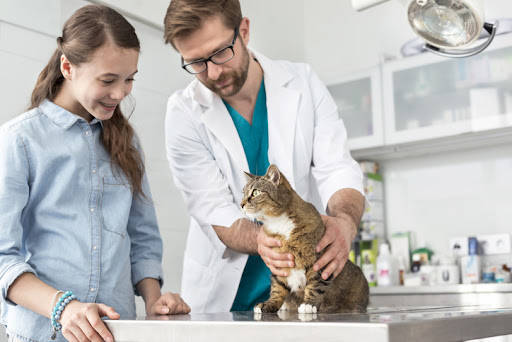
It is also not advisable to prescribe an antiemetic for your cat on your own. Since vomiting is a defense mechanism, and suppressing vomiting can aggravate the animal's condition.
Causes of vomiting in cats
In most cases, vomiting in cats is associated with a disorder of the gastrointestinal tract. However, there are many more causes of malaise. For convenience, they are divided into two main groups: physiological and pathological.
Physiological causes of vomiting are due to the natural cleansing of the body from unnecessary or unfamiliar products. Vomiting is caused by a lack of enzymes necessary for digestion or by irritation of the gastric mucosa. If you adjust the cat's diet and feed it digestible food, the vomiting will go away on its own. There is no need to treat the cat with medication.
– A sudden change in food. If a cat eats the same thing and then tries something new, the body reacts with vomiting and indigestion. The pathological process is associated with a lack of enzymes needed to break down unfamiliar food.
– Hunger. Prolonged interruption of food intake provokes the active production of gastric juice, which corrodes the walls of the stomach and provokes irritation of the mucosa. The cat vomits before or during meals with white or light yellow foam. Such vomiting is called hunger vomiting.
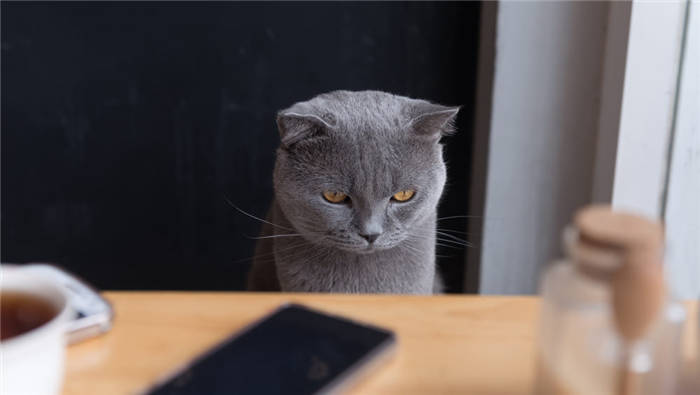
– Overeating. If a cat eats more than it can digest and swallows large chunks of food, some of what it has eaten is spewed out along with gastric juice and foam. In case of overeating the cat may vomit both during and immediately after eating. The problem is solved by a strict dosage of a single portion.
– Lumps of hair. All cats are very clean, so they lick themselves after every meal or contact with another animal or person. As a result, hairballs accumulate in the stomach, which irritate the mucosa and provoke vomiting.
Usually a cat vomits fur once and the animal's condition quickly stabilizes. But if the vomiting turns brown, see your veterinarian immediately. The hair has probably clogged the intestinal lumen, and only surgery can get rid of it.
Symptoms of vomiting in cats
The main sign of nausea in cats is salivation, drooling, the cat "chomping", licking, often swallowing saliva. Nausea may be accompanied by a gag reflex or be unproductive.
A variation of the norm is increased salivation when riding in a car (cats also get carsick), some saliva may be excreted from pleasure when a cat purrs, pats you on the legs and shows extreme satisfaction. "Chomping" and constant tongue movements can be a symptom of dental disease. And inability to swallow and salivating can be a symptom of a dangerous infection, rabies.
Vomiting in cats can be confused with belching (regurgitation) and with coughing. If in doubt, videotape the process and show it to your doctor at your appointment. In true vomiting, the cat assumes a characteristic posture, it archs, its abdominal wall muscles contract, vomiting may be accompanied by specific guttural sounds, the owners describe it with the words "cat vomits".
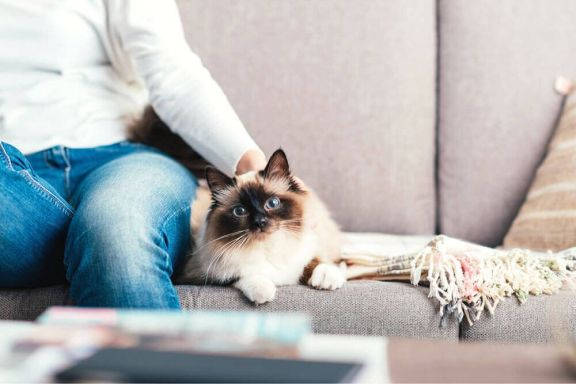
Varieties of vomiting
Previously, we tried to describe the most common causes of vomiting in cats. Let's try to look at the different types of vomiting and suggest which diseases they are characteristic of.
- Vomiting white foam. White foam is gastric juice and saliva. Such vomiting is found in gastritis. It is white foam vomiting – a typical variant of "hungry" vomiting in cats.
- Vomiting transparent mucus. Most likely in such vomit masses is dominated by saliva. Severe nausea and salivation can be with gastritis, pancreatitis, and foreign bodies in the oral cavity.
- Vomiting gray masses.. Take a closer look, you will most likely notice wool in such a mass. Such vomiting may be a variant of the norm, if it does not happen often and is not accompanied by a lack of appetite and apathy. If vomiting gray mass is more frequent, the cat may be itching and licking too much, perhaps it has abnormal shedding.
- Vomiting green liquid. Such vomiting can be a dangerous symptom of intestinal obstruction in cats, especially if the vomit has a strong foul odor.
- Vomiting with blood, vomiting red fluid. Scarlet blood in the vomit, most often a sign of burst blood vessels in the esophagus with severe tenesmus (straining when vomiting) and repeated vomiting. This vomiting can also be when blood is swallowed from the oral cavity (diseases of the gums, oral mucosa, neoplasms in the mouth).
- Black vomiting. Vomiting the color of coffee grounds is digested blood in the vomit. Such vomiting can be in severe diseases of the stomach – ulcers, neoplasms.
- Vomiting yellow fluid .. It is vomiting with a mixture of bile. It can occur with cholecystitis, cholestasis (diseases of the gall bladder), diseases of the liver, stomach and duodenum.
First aid for a cat
It is possible to help a cat at home as well. If signs of dangerous vomiting are detected, the following steps must be taken immediately:
- Immediately stop the toxic substance from entering the body. Effective if vomiting is caused by poisoning. In case the owner does not know exactly what caused the dangerous symptom, the pet should be closely monitored before going to the doctor and suppress any attempts of the animal to eat anything.
- The cat's body needs to eliminate the possibility of dehydration. In order to do this, it is necessary to offer clean water to the cat at all times. If it does not feel thirsty and does not drink itself, you need to give water by force, the main thing is that the weakened body always has a sufficient amount of fluid. The only exception is if the water makes the cat vomit again.
- If you suspect that the cat has swallowed a foreign object and it is this that is causing the vomiting, you can examine the cat's throat yourself. If you find a foreign body but can't get it out yourself, you need to go to the vet immediately – if you risk doing it yourself, you might injure your pet.
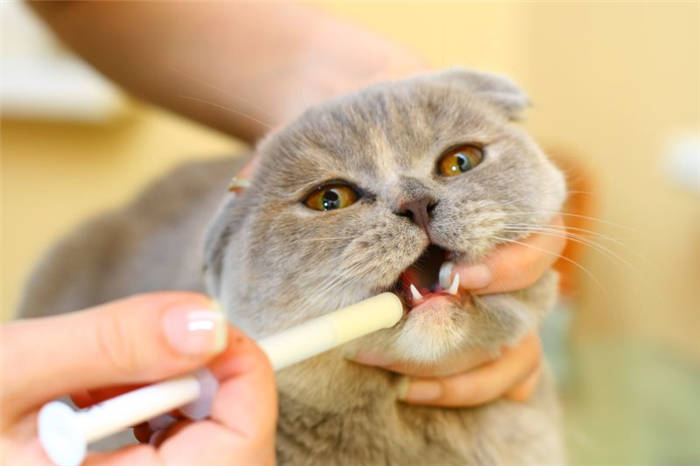
Treatment
The main rule of treating a pet when vomiting occurs is to avoid self-diagnosis and the use of unknown medications. Only a professional veterinarian can determine the cause of vomiting and prescribe treatment, making such decisions on your own is negligent to your pet.
For vomiting caused by various causes, pets are prescribed one of the following medications:
The choice of treatment is always selected by the veterinarian for each individual case. For example, in some situations it will be enough to keep the pet on a diet for a few days to recover, while in others, there is no way to do without surgical intervention.
To accurately determine the diagnosis at the veterinary clinic specialists take a number of tests: urine, blood, saliva, feces, etc. Based on their results we can better determine what caused the vomiting, and prescribe an effective treatment.
Diagnostic measures
At the veterinary clinic in case of vomiting yellow fluid, the doctor will carefully examine the cat, feel his abdomen, check the mucous membranes and measure the body temperature. Then he will need detailed information about the cat's condition, as well as documents with records of vaccinations, dehelminthization and past diseases.
These manipulations are usually done to make the correct diagnosis:
Owners should not refuse diagnostic measures, because they are all aimed at saving the cat's life. Unfortunately, even modern diagnostic methods do not always allow to know the causes of yellow fluid vomiting, so they often complement each other. For example, ultrasound and X-rays will not help to determine poisoning, and also do not always show acute inflammatory processes in the gallbladder and liver. This is why doctors prescribe additional tests.
Methods of treatment
After receiving the results of all the tests, the veterinarian will individually select a method of treatment.
First of all, it will be necessary to restore the water-salt reserve in the cat's body. For this purpose, drips with Ringer-Locke's solution are used. In addition, the pet will have to be put on a diet: include nutritious, but light food in its diet.
- Sorbents and antitoxins. They are prescribed if the cat is poisoned by any poisonous substances.
- Antispasmodics and antiemetics.
- Medications to protect the stomach and maintain liver function.
- Vitamins and immunomodulators.
- Antibiotics. Prescribed if the cause of yellow fluid vomiting is any infectious disease
- Anthelmintics.
If vomiting yellow fluid that was caused by improper feeding, the pet can be treated at home with Smecta or activated charcoal. Dosage: 1 tablet or 1 ml per 1 kg of weight. You can also give the cat to drink a strong decoction of peppermint.
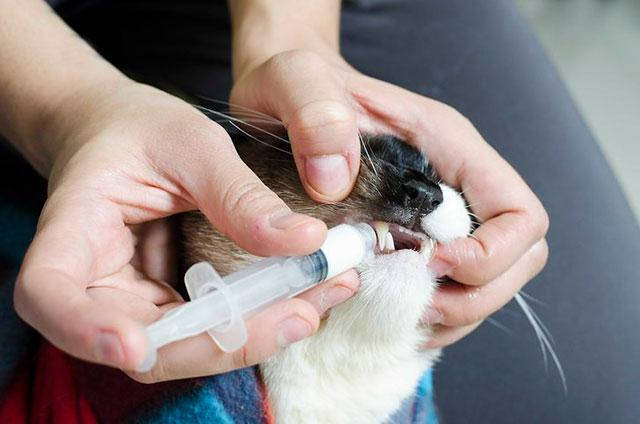
If vomiting yellow liquid once, it is recommended to postpone feeding for 8 hours. Instead of water, it is better to give the cat to lick an ice cube, so as not to cause another attack of vomiting. At the end of the break, the pet should be given a drink and closely monitor its reaction. If there is no nausea, you can feed the cat with thin porridge, cooked lean fish or meat. From the next day stick to its usual diet.
If the cat vomits bile, the owner should closely monitor the condition of his pet to keep it from unpleasant health consequences and death. The best way to deal with vomiting is to prevent its occurrence. The cat needs proper care: selection of diet, vaccinations, deworming, combing and other necessary manipulations.
When you need to seek immediate medical attention
- A kitten vomits for two or more days;
- Vomiting several times a day;
- There is blood or bile in the secreted contents;
- The cat does not eat anything, but only drinks water and sleeps;
- other symptoms in the form of fever, lethargy, nasal or eye discharges, stomach upsets appear;
- The cat vomits regardless of food intake.
To make a diagnosis, the doctor examines the cat, examining the symptoms from the owner's words. If necessary, an ultrasound, blood tests, gastroscopy are additionally appointed.
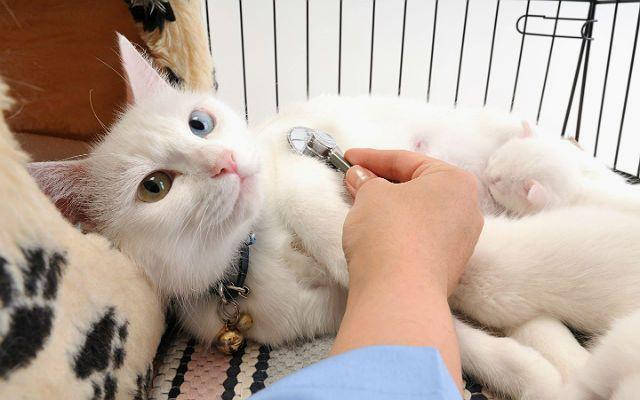
Prevention
No one is immune from vomiting in a cat. But it is possible to reduce the likelihood of its appearance. There are a few simple recommendations:
- Give the cat only fresh food;
- Give regular preventive vaccinations;
- regularly comb out long-haired cats;
- Feed small portions of food 3-4 times a day;
- remove all household chemicals from the cat's reach;
- give anthelmintics every three months;
- remove all small objects from the house;
- Do preventive examinations at the veterinarian.
If the cat does not eat anything, only drinks water and sleeps, do not panic or self-medicate. Learning the symptoms and seeing a veterinarian on time can fix the situation for the better.
💡 A side note. You can always ask a veterinary nutritionist for help in creating a balanced diet for your pet. You do not need to go anywhere for that. You can consult with a veterinarian online at any time without leaving your home.






